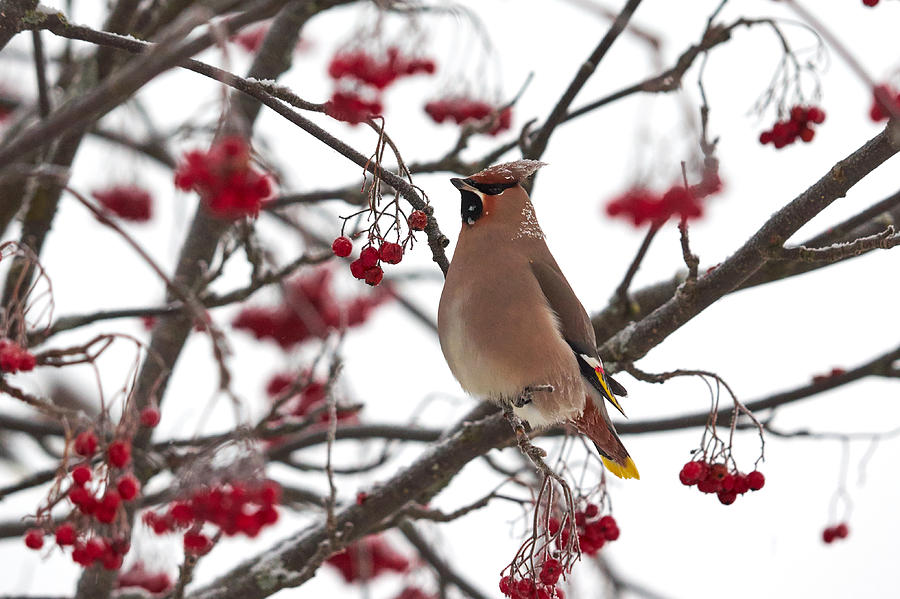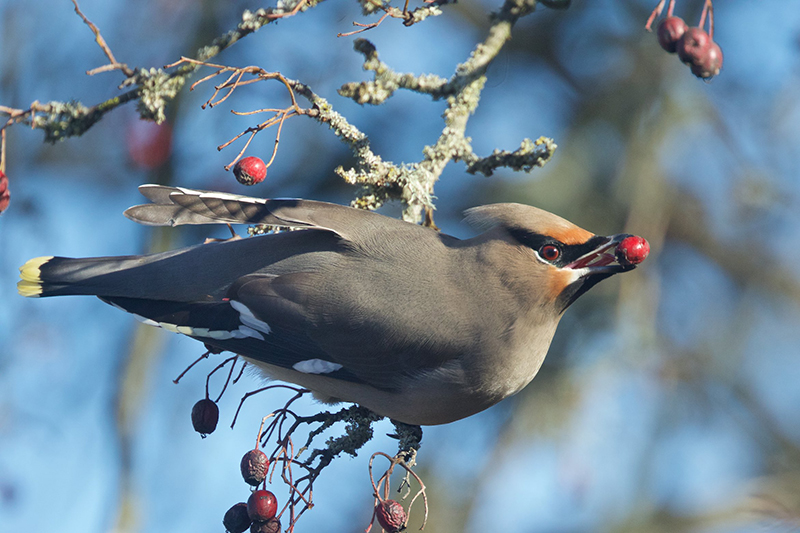The Bohemian Waxwing: Nature’s Unintended Boozer
In a quiet, snow-covered town, where everything looks calm and serene—until you glance at the ground and see small, fluffy birds sprawled out like tiny, feathered drunks who just got kicked out of a bar. No, this isn’t some bizarre avian crime scene. It’s the hilarious, almost unbelievable, yet completely true phenomenon of Bohemian Waxwings getting tipsy off fermented berries!

The Bohemian Waxwing (Bombycilla garrulus) is a stunning bird with silky plumage, a punk-rock crest, and striking red-tipped wings. These birds are native to the northern forests of Europe, Asia, and North America, where their diet consists almost entirely of berries. And here lies the root of their wild adventures—because when those berries ferment in the winter, Waxwings don’t just eat them. They binge.
Unlike humans, these birds aren’t deliberately looking for a good time. They’re just hungry. But when the weather gets unpredictable, especially during warmer winters, berries from the Rowan tree (Sorbus aucuparia) and other fruit-bearing plants begin to ferment on the branches. The result? A naturally occurring alcohol buffet that turns these innocent birds into the party animals of the sky.
Aerial Acrobatics… or Drunken Stumbles?

When a Waxwing eats too many fermented berries, the alcohol starts to take effect. And just like humans who’ve had one too many, their behavior changes drastically. Some start swaying on tree branches, gripping on for dear life as if the world is spinning. Others attempt to fly but instead wobble dangerously, crashing into windows, cars, or even each other. Occasionally, entire flocks will be found lying motionless on the ground—not dead, just embarrassingly inebriated and waiting for their little bird hangovers to pass.
This has led to some amusing (and concerning) situations. In places like Yukon, Canada, animal rescue teams and wildlife rehabilitation centers have had to step in and assist intoxicated Waxwings. Some birds are picked up and placed in special enclosures to sober up before they’re released back into the wild. In extreme cases, some birds become so dependent on their fermented diet that they are unable to reintegrate into their natural environment and must remain in sanctuaries.
A Long History of Avian Alcoholism

While Waxwings are the most infamous for their accidental drunken escapades, they’re not the only birds that have experienced the effects of fermented fruit. Reports of tipsy birds date back centuries. Scientists and naturalists have observed various species, including robins, blackbirds, and starlings, partaking in similar drunken feasts. However, Waxwings take it to another level because their digestive system is specifically designed for a high-fruit diet. They can eat several times their body weight in berries, meaning when those berries are alcoholic, they’re essentially downing shots faster than a college fraternity on spring break.
In 2018, a small town in Minnesota even issued a warning about intoxicated birds after multiple reports of disoriented Waxwings flying into windows and pedestrians. Concerned residents initially thought something was wrong with the local wildlife until experts explained that the birds were simply drunk from fermented crabapples. Authorities humorously suggested people avoid walking under trees full of these party-loving birds to prevent unexpected (and slightly sozzled) aerial bombardments.
The Rowan Tree: Nature’s Brewery
At the heart of this phenomenon is the Rowan tree, also known as the Mountain Ash. This tree is famous for its bright red berries, which are a favorite snack for birds in the winter months. But what makes Rowan berries so potent?

The fermentation process begins when the berries freeze and thaw repeatedly. Enzymes break down sugars, and natural yeasts get to work, turning the fruit into mini booze bombs. The longer they stay on the tree, the higher the alcohol content. By the time Waxwings descend upon these trees, they’re unknowingly walking into an all-you-can-eat-and-drink buffet.
Interestingly, humans have long recognized the intoxicating properties of Rowan berries. Some cultures have even made alcoholic beverages from them. In Scandinavia and Eastern Europe, Rowan berry liqueurs and infused vodkas are popular. However, unlike our feathery friends, people tend to pace themselves.
The Science of Drunken Birds
One might wonder—how does alcohol affect birds differently from humans? Do they experience hangovers? Can they build a tolerance?
Well, researchers have looked into this. Bird livers process alcohol much faster than human livers, but when they consume large amounts in a short period, they can still experience intoxication. Their small size means that even a tiny dose of alcohol has a strong effect, making them more vulnerable to the dangers of being, well, hammered.
While it’s unclear whether birds suffer from hangovers the way humans do, some evidence suggests they might. Scientists have observed Waxwings appearing sluggish and less coordinated after an especially boozy meal, spending more time resting than usual. So, if you ever see a bird sitting around looking miserable after a heavy night of berry feasting, it might just be experiencing nature’s version of the morning after.
When Partying Becomes a Problem

While the image of drunken Waxwings tumbling from the sky is undeniably amusing, there are some serious conservation concerns. Birds flying into windows, roads, and buildings due to intoxication can lead to injury or death. Wildlife experts recommend simple solutions like putting decals on windows to make them more visible to birds or planting native berry-producing shrubs away from high-traffic areas.
Additionally, climate change has impacted the timing of berry fermentation, leading to unpredictable food sources for birds. Warmer winters cause berries to ferment earlier, potentially throwing off migration patterns and natural feeding behaviors. Scientists are studying how this affects bird populations in the long term and what can be done to mitigate negative impacts.
The Feathered Party Never Stops
Despite these concerns, the Waxwing’s relationship with fermented fruit remains one of the most fascinating and entertaining examples of nature’s quirks. These birds, with their sleek appearance and unintentional love for fermented fruit, remind us that sometimes nature can be as wild and unpredictable as a night out with friends.
So, the next time you see a Bohemian Waxwing perched on a branch, looking a little too relaxed, you might just be witnessing one of nature’s most amusing spectacles—proof that even in the animal kingdom, some just can’t handle their liquor.
And remember, if you ever find a bird seemingly passed out on the sidewalk, don’t assume the worst. It might just need a safe place to sober up before flying off to find its next berry-fueled adventure!
You might have missed many other fascinating pieces of information, follow Maybemiss.com to stay updated on things that may be old but feel incredibly new!














Discussion about this post